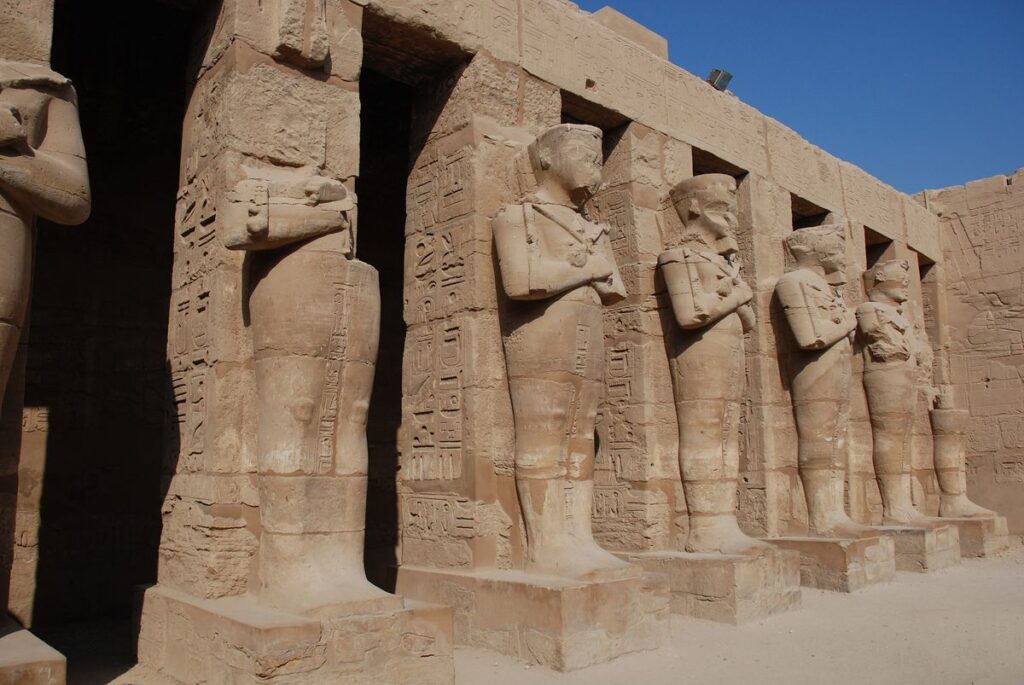The Seven Wonders of the World have captivated the imaginations of people around the globe for centuries. Initially listed by Greek historian Herodotus and later updated in 2007 through a global vote, these marvels represent the pinnacle of human ingenuity and architectural grandeur. From the ancient pyramids to modern-day architectural feats, the Seven Wonders are a testament to the creative spirit of humanity. This article explores the New Seven Wonders of the World, as declared in 2007, which include the Great Wall of China, Petra, Christ the Redeemer, Machu Picchu, Chichen Itza, Colosseum, and the Taj Mahal.
Key Takeaways
- The New Seven Wonders were selected through a global vote organized by the New 7 Wonders Foundation in 2007, reflecting contemporary admiration for these sites.
- The list includes a diverse array of structures from different civilizations, each with unique cultural, historical, and architectural significance.
- The Seven Wonders are not static; they have evolved over time with various organizations proposing new lists to reflect the changing world and its marvels.
- The Great Wall of China, Petra, and the Taj Mahal are examples of the wonders that showcase the grandeur and craftsmanship of ancient societies.
- Modern interpretations of the Seven Wonders also recognize natural and underwater marvels, expanding the concept beyond man-made structures.
1. Great Wall of China

The Great Wall of China stands as a testament to the architectural prowess and historical significance of ancient Chinese civilizations. Spanning over 13,000 miles, this monumental structure was built over the course of two millennia, starting in the 7th century BCE.
The primary purpose of the Great Wall was to safeguard the nation from invasions and to manage trade and immigration along the Silk Road. Despite common myths, it is not visible from outer space.
The Great Wall’s construction is a story of human determination, involving countless workers and stretching across various dynasties, with the most significant contributions made during the Ming Dynasty.
Here are some key facts about the Great Wall:
- Initiated by Emperor Qin Shi Huang of the Qin dynasty.
- Took over 2000 years to complete, with major work in the Ming Dynasty era.
- Incorporates natural barriers like mountains and rivers.
While the wall’s exact length is a subject of debate, the commonly cited figure is approximately 5,500 miles, though Chinese sources claim it to be over 13,000 miles. This discrepancy highlights the complexity and scale of the structure.
2. Petra

Nestled in the heart of southern Jordan, Petra stands as a testament to the ingenuity and artistry of the Nabataeans. Founded in the 5th century BC, this archaeological marvel, also known as Raqmu, is renowned for its unique rock-cut architecture and striking rose-colored stone, earning it the nickname ‘Rose City’.
Petra’s significance extends beyond its aesthetic appeal; it was a vital trade center strategically positioned between important ancient cities. The Nabataeans, a tribe with Bedouin roots, not only carved magnificent structures such as the iconic Al-Khazneh (the Treasury) and the Siq but also engineered an advanced water conduit system, evidence of which is displayed in the local museum.
Petra’s allure is undeniable, with over 600 structures contributing to its status as a UNESCO Heritage Site and its inclusion in the Smithsonian’s ’28 places you must visit before you die’ list.
Here are some key points about Petra:
- The city is carved into pink rock, which gives Petra its famous hue.
- A sophisticated water conduit system was developed by the Nabataeans.
- Petra is a must-see destination, celebrated as one of the New 7 Wonders of the World.
3. Christ the Redeemer

Standing tall on Mount Corcovado, the Christ the Redeemer statue is an iconic symbol of Rio de Janeiro and Brazil. Completed in 1931, this Art Deco masterpiece was designed by Heitor da Silva Costa and sculpted by Paul Landowski, with Gheorghe Leonida fashioning its serene face.
The statue’s open arms stretch over Rio, offering a warm embrace to the city below. At 98 feet tall and with arms spanning 92 feet, it is a marvel of engineering and a testament to the city’s faith.
The construction of this monumental statue was a feat of collaboration and international effort, involving not just Brazilian, but also French expertise. It stands as the world’s largest Art Deco statue and is part of the New Seven Wonders of the World.
- Height: 98 feet (30 meters)
- Arm Span: 92 feet (28 meters)
- Weight: 635 tonnes
- Material: Reinforced concrete and soapstone
- Location: Peak of Corcovado Mountain, Tijuca Forest National Park
The statue’s presence is felt not just in its physical grandeur but also in its cultural significance, embodying the spirit and identity of Brazil.
4. Machu Picchu

The Inca city of Machu Picchu, perched high in the Andes Mountains of Peru, is a testament to the architectural prowess of the Incan Empire. Built around 1450, this majestic site was abandoned during the Spanish Conquest, only to be rediscovered in 1911 by Hiram Bingham. Machu Picchu stands as a symbol of the Incan civilization’s ingenuity and resilience.
Declared a UNESCO World Heritage Site in 1983, Machu Picchu spans approximately 353 square kilometers and is constructed with intricate dry stone walls. The city’s elevation at 7970 feet above sea level presents a breathtaking yet challenging journey for visitors.
Machu Picchu’s remote location and unique construction have made it one of the most iconic archaeological sites in the world, drawing countless visitors each year despite its status as one of the top 100 endangered places.
Here are some quick facts about Machu Picchu:
- Built as an estate for Emperor Pachacuti
- Approximately 8,000 feet (2,430 meters) above sea level
- Covers an area of 80,536 acres
- Under threat from tourism and natural disasters like earthquakes
5. Chichen Itza

Nestled in the Yucatn Peninsula, Chichen Itza stands as a monumental testament to the grandeur of the Maya-Toltec civilization. Flourishing between the 5th and 13th centuries, this ancient city was a hub of cultural and religious significance.
The iconic Temple of Kukulkán, also known as El Castillo, is the centerpiece of Chichen Itza. With its 365 steps, it mirrors the Haab solar calendar, embodying the Mayans’ astronomical precision. Visitors from around the globe are drawn to this pyramid, especially during the equinoxes, to witness the illusion of a serpent descending its northern staircase.
Chichen Itza’s legacy extends beyond its architectural marvels, remaining sacred to the Maya long after being reclaimed by the jungle. Excavations in the 19th century unveiled its splendor, making it one of Mexico’s prime archaeological sites.
The name ‘Chichen Itza’ translates to ‘at the mouth of the well of the Itza’, a reflection of its geographical and cultural roots. Today, it is not only a symbol of Mayan ingenuity but also a beacon for history enthusiasts and tourists alike.
6. Colosseum

The Colosseum, an enduring symbol of the ancient Roman Empire, stands as a testament to Roman engineering and architecture. Commissioned by Emperor Vespasian of the Flavian dynasty around A.D. 70-72, it was inaugurated by his son Titus in 80 AD with a hundred days of games, including gladiatorial battles and animal contests.
Despite suffering damage from fires, earthquakes, and the passage of time, the Colosseum continues to dominate the Roman landscape, attracting millions of visitors each year. Its massive structure, originally capable of seating approximately 65,000 spectators, showcases the grandeur of ancient Rome.
The Colosseum not only served as a stage for entertainment but also became a symbol of power and might. It has witnessed countless battles and has been a venue for significant historical events.
In modern times, the Colosseum has hosted performances by renowned artists and serves as a poignant symbol against the death penalty, with protests held opposite its grand arches. The following table summarizes key facts about the Colosseum:
| Feature | Detail |
|---|---|
| Built In | 80 AD |
| Commissioned By | Emperor Vespasian |
| Capacity | ~65,000 spectators |
| Events | Gladiatorial contests, animal fights |
| Modern Use | Concerts, symbol against death penalty |
Recognized as the world’s largest amphitheatre by the Guinness Book of World Records, the Colosseum’s legacy endures, reminding us of the complex and often brutal history of human civilization.
7. Taj Mahal

The Taj Mahal stands as a testament to love and architectural magnificence. Constructed by the Mughal emperor Shah Jahan, this marble mausoleum honors the memory of his beloved wife Mumtaz Mahal. The site, located in Agra, India, is not only a symbol of devotion but also a masterpiece of Mughal architecture, drawing millions of visitors each year.
The intricate carvings and inlays showcase the zenith of Mughal craftsmanship, with every detail reflecting a commitment to beauty and elegance. The Taj Mahal’s construction involved a staggering 20,000 artisans, a testament to the emperor’s determination to create an enduring legacy.
Here are some key facts about the Taj Mahal:
- Location: Agra, Uttar Pradesh, India
- Construction Period: 1632–1653
- Architectural Style: Mughal architecture
- UNESCO Heritage Site status
The Taj Mahal’s significance extends beyond its role as a mausoleum; it is a cultural and historical icon, representing the rich heritage of India.
Conclusion
The Seven Wonders of the World, both ancient and modern, stand as a testament to the enduring legacy of human creativity and architectural prowess. From the Great Pyramid of Giza to the Great Wall of China, these marvels not only showcase the ingenuity of past civilizations but continue to inspire awe and wonder in the hearts of contemporary observers. As we reflect on these extraordinary structures, we are reminded of the boundless potential of human achievement and the cultural significance that transcends time. Whether through the lens of history or the spirit of modern innovation, the Seven Wonders will undoubtedly continue to fascinate and captivate the imagination of generations to come.
Frequently Asked Questions
What are the New 7 Wonders of the World?
The New 7 Wonders of the World are the Great Wall of China, Petra, Christ the Redeemer, Machu Picchu, Chichen Itza, Colosseum, and the Taj Mahal. These were selected through a global poll conducted by the New 7 Wonders Foundation in 2007.
How were the New 7 Wonders of the World chosen?
The New 7 Wonders of the World were chosen through a global vote organized by the New 7 Wonders Foundation (N7W) in 2007, where millions of people worldwide voted for their favorite landmarks.
What criteria were used to select the New 7 Wonders of the World?
There are no specific criteria for being named a New Wonder of the World. However, the landmarks were chosen based on their cultural and historical significance, architectural marvel, and the awe they inspire.
What is the youngest of the New 7 Wonders of the World?
The youngest of the New 7 Wonders of the World is Christ the Redeemer in Brazil, which was completed in 1931.
Can the list of the Seven Wonders of the World change?
Yes, the list of the Seven Wonders of the World can change. The most recent update was in 2007, and future changes could occur based on new initiatives or global recognition.
Are there other lists of wonders besides the New 7 Wonders of the World?
Yes, there are other lists of wonders, including the Seven Wonders of the Ancient World, Seven Natural Wonders, and Seven Underwater Wonders, each showcasing unique marvels from different categories.








Your point of view caught my eye and was very interesting. Thanks. I have a question for you.
Thanks for sharing. I read many of your blog posts, cool, your blog is very good.
I don’t think the title of your article matches the content lol. Just kidding, mainly because I had some doubts after reading the article.
Thank you for your sharing. I am worried that I lack creative ideas. It is your article that makes me full of hope. Thank you. But, I have a question, can you help me? https://accounts.binance.com/en/register?ref=JHQQKNKN